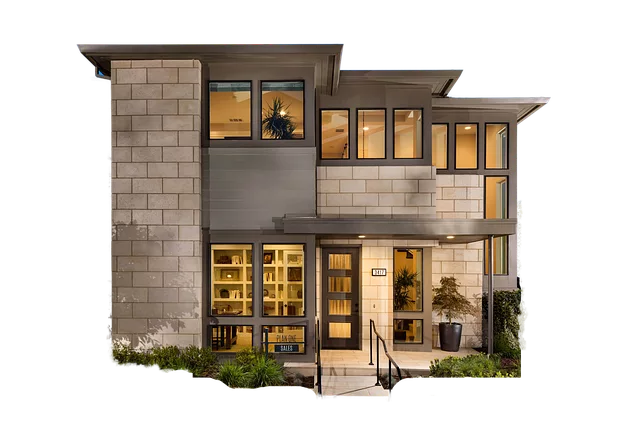Residential walls can exhibit cracks, bows, bulges, or leans due to various factors like soil settlement, differential hydration, frost heave, and inadequate structural support. These defects range from minor aesthetic issues to severe structural damage, emphasizing the need to understand their causes for effective Residential Foundation Repair solutions. Key root causes include poor drainage, expansive clay soils, shifting soil, and tree root intrusion. Early detection through visual inspections is crucial, focusing on corners, joints, windows, and doors. Prompt professional repair services prevent further complications. Tailored repair methods address settlement, moisture, or foundation movement, with cosmetic options for aesthetic appeal. Regular inspections and maintenance are vital to catch problems early and prevent costly repairs.
Cracked or bowing walls in residential structures are signs of underlying issues, often related to foundation problems. This article delves into the intricacies of understanding and addressing these concerns, offering insights on common causes, from settlement to poor construction. We guide you through visual inspection techniques, repair methods, and when to seek professional help for effective residential foundation repair. Learn preventive measures to safeguard your home’s stability and avoid future wall instability.
Understanding Wall Cracks and Bows in Residential Structures

Cracks and bows in residential walls are common issues that can arise due to various factors, often indicating underlying problems with the structure’s foundation. These defects may appear as vertical or horizontal cracks, bulging, or leaning walls, and can range from minor aesthetic concerns to significant structural damage. Understanding the causes and potential implications is crucial for homeowners and professionals alike, especially when considering residential foundation repair solutions.
Several environmental and structural factors contribute to wall cracks and bows. Soil settlement, differential hydration (when concrete cures at different rates), frost heave, and inadequate structural support can all lead to these issues. Over time, these factors can exert pressure on walls, causing them to crack or bow, especially in areas with poor drainage or expansive clay soils. Identifying the specific cause is essential for effective long-term solutions, ensuring the stability and longevity of residential structures.
Common Causes of Foundation-Related Wall Damage

Cracked or bowed walls are often signs of foundation issues, which can be caused by a variety of factors. One of the primary culprits is poor soil conditions, especially in areas with high clay content. Expansion and contraction of the soil due to moisture changes can put immense pressure on foundations, leading to cracks and bows in walls over time. Another common cause is improper construction practices, such as inadequate reinforcing steel or subpar concrete quality, which weaken the structural integrity of the foundation.
Additionally, shifting soil due to nearby excavations or construction projects can exacerbate these problems. Tree roots also play a role; their growth can lead to structural damage as they push against foundations. In many cases, improper drainage around the property contributes to moisture issues, further compromising the stability of residential structures and necessitating professional Residential Foundation Repair solutions.
Visual Inspection: Identifying Signs of Distress

A visual inspection is often the first step in identifying potential issues with cracked or bowing walls, serving as a crucial aspect of residential foundation repair. Homeowners and professionals alike should be vigilant for signs of distress, such as cracks wider than 1/8th of an inch, vertical or horizontal bowing, and uneven wall surfaces. These indicators can point to various problems, including settlement, shifting soil, or structural instability. Regularly examining walls, especially in areas prone to extreme weather or on older homes, allows for early detection of these issues.
During the inspection, pay close attention to corners, joints, and areas around windows and doors, as these are common weak points. If left unaddressed, even minor cracks can escalate into significant structural damage over time. Promptly addressing signs of distress through professional residential foundation repair services is essential to prevent further complications and ensure the integrity of the home’s structure.
Types of Repair Methods for Damaged Walls

When dealing with cracked or bowing walls, understanding repair methods is crucial for both structural integrity and aesthetic appeal. For residential properties, several options exist to address wall damage, each tailored to specific causes like settlement, moisture intrusion, or foundation movement. One common approach is Residential Foundation Repair, which involves addressing the root cause rather than merely fixing the surface. This could mean underpinning, where additional support is added below the affected area, or installing tie rods and anchors to stabilize the wall.
In less severe cases, cosmetic repairs may suffice. This includes filling cracks with appropriate fillers, applying rendering to smooth surfaces, or even repainting to hide defects. For bowing walls, bracings and wall ties can be used temporarily while permanent solutions like steel beams or advanced structural jackets are installed for long-term support. Choosing the right repair method depends on factors like the extent of damage, local building codes, and the specific needs of the property owner.
When to Call a Professional for Foundation Repair

If you notice cracks in your walls or signs of bowing, it might be time to consider professional help for residential foundation repair. While minor cracks can sometimes be addressed with DIY methods or simple home remedies, more severe cases indicate a deeper issue with your home’s structural integrity. Foundation problems often go unnoticed until they’ve progressed, so regular inspections are key to preventing costly repairs later on.
When cracks exceed 1/8-inch width, or if you observe uneven floors, doors that stick, or visible gaps around windows, it’s advisable to consult a foundation repair specialist. They have the expertise and tools to assess the situation accurately and provide effective solutions like underpinning, piecemeal repairs, or more advanced techniques for severe cases. Prompt action is vital to prevent further damage and ensure the safety and stability of your home.
Preventive Measures to Avoid Future Wall Instability

To prevent future wall instability, especially in residential areas, proactive measures are key. Regular inspection and maintenance are fundamental to identifying potential issues early on. Homeowners should be vigilant about checking for any signs of cracks, bowing, or uneven walls, particularly in older homes or those built on unstable soil. Addressing these issues promptly through minor repairs can stop them from escalating into costly and structurally damaging problems.
One effective preventive strategy is to implement proper drainage around the property. Ensuring that rainwater sheds away from the foundation can significantly reduce pressure on the walls. Additionally, installing a waterproof membrane and sealing any existing cracks can provide an extra layer of protection against moisture intrusion, which often exacerbates wall instability. Regularly maintaining these measures ensures the long-term stability and integrity of residential foundations and structures.
